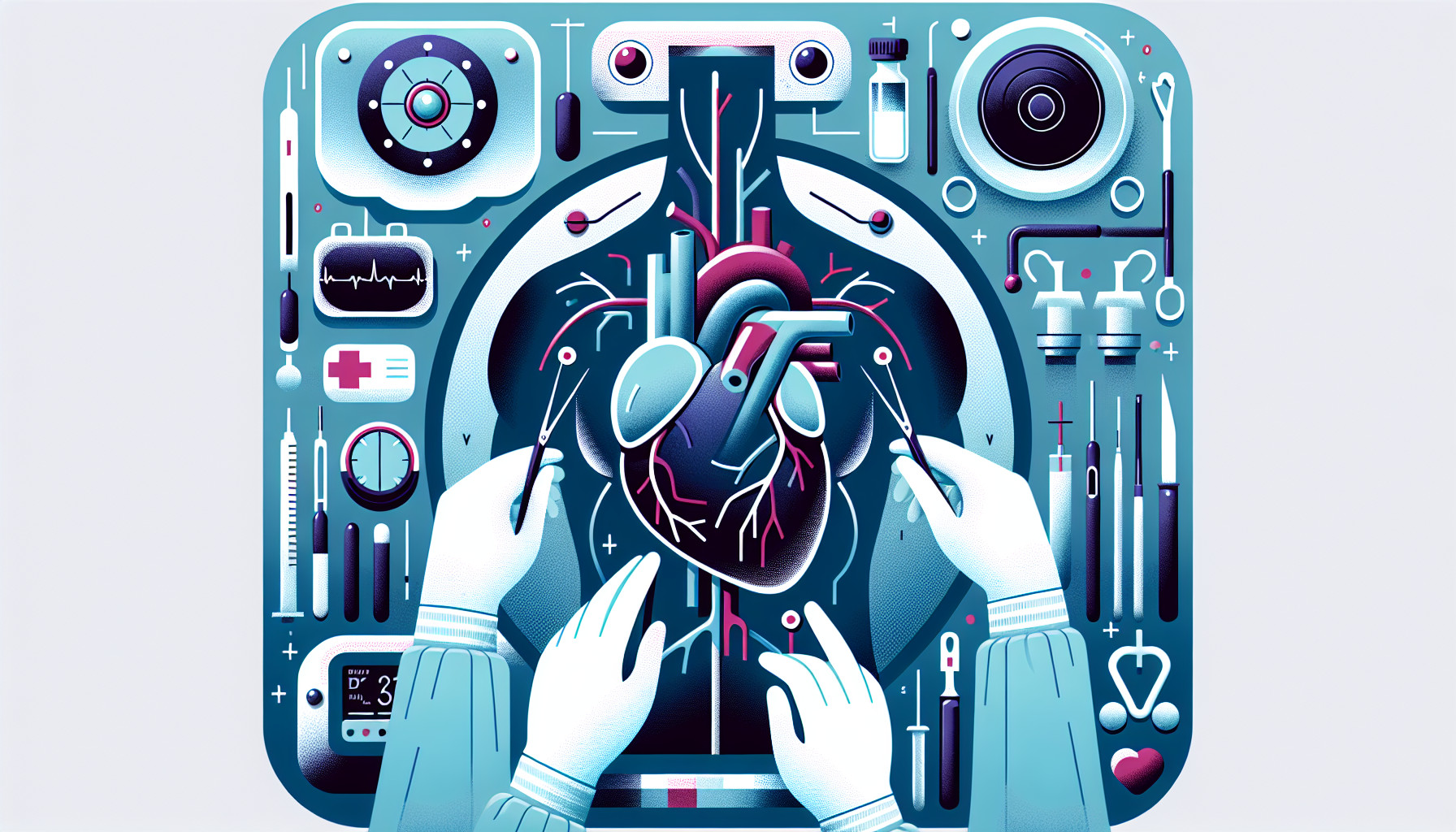Our Summary
This research paper explores the process and potential challenges of performing a coronary artery bypass surgery, a common procedure that new heart surgeons often learn to do first in their training. The paper goes over each step of the surgery and suggests solutions for any problems that might come up. It also includes the perspective and advice of a seasoned surgeon for trainees and readers. In simpler terms, it’s a guide for new heart surgeons on how to do a common type of heart surgery, with tips on how to handle any difficulties they might face.
FAQs
- What is the coronary artery bypass procedure?
- What are the potential difficulties encountered during a coronary artery bypass?
- What solutions are suggested for the difficulties encountered during a coronary artery bypass procedure?
Doctor’s Tip
A helpful tip a doctor might tell a patient about coronary artery bypass is to follow a healthy lifestyle post-surgery, including regular exercise, a balanced diet, and avoiding smoking. These lifestyle changes can help improve the long-term success of the bypass surgery and reduce the risk of future heart problems.
Suitable For
Patients who are typically recommended for coronary artery bypass surgery are those who have severe coronary artery disease that cannot be managed with medications or less invasive procedures such as angioplasty. These patients may have blockages in multiple arteries, severe symptoms such as chest pain or shortness of breath, or a history of heart attacks. Additionally, patients who have diabetes or other high-risk factors for heart disease may also be recommended for coronary artery bypass surgery.
Timeline
Before coronary artery bypass surgery:
- Patient undergoes a series of diagnostic tests to determine the extent of blockages in the coronary arteries.
- Patient may be advised to make lifestyle changes, such as quitting smoking or improving diet and exercise habits, to reduce the risk of complications during and after surgery.
- Patient meets with their cardiac surgeon to discuss the procedure, potential risks, and expected outcomes.
- Patient may be prescribed medications to manage symptoms and improve heart function leading up to surgery.
After coronary artery bypass surgery:
- Patient is closely monitored in the intensive care unit immediately following surgery to ensure stable vital signs and recovery from anesthesia.
- Patient may experience pain and discomfort at the incision site, which is managed with medications.
- Patient begins a structured rehabilitation program to regain strength, endurance, and mobility.
- Patient may be prescribed medications to prevent blood clots, manage pain, and reduce the risk of complications.
- Patient undergoes follow-up appointments with their cardiac surgeon to monitor progress and address any concerns or complications.
What to Ask Your Doctor
- What are the risks and benefits of coronary artery bypass surgery for my specific condition?
- How long will the recovery process take, and what can I expect in terms of pain and limitations during that time?
- Are there any alternative treatment options to consider before undergoing surgery?
- What is the success rate of this procedure, and what factors may affect my individual outcome?
- How many coronary artery bypass surgeries have you performed, and what is your success rate?
- What type of anesthesia will be used during the surgery, and what are the potential side effects or complications?
- Will I need to make any lifestyle changes or take medication after the surgery to prevent further heart issues?
- How long will the effects of the bypass surgery last, and will I need any additional procedures in the future?
- What follow-up care will be required after the surgery, and how often will I need to see a cardiologist or other healthcare provider?
- Are there any specific warning signs or symptoms that I should watch for after the surgery, indicating a potential complication?
Reference
Authors: Raffa GM, Malvindi PG, Kowalewski M, Sansone F, Menicanti L. Journal: Semin Thorac Cardiovasc Surg. 2017 Summer;29(2):137-142. doi: 10.1053/j.semtcvs.2017.01.015. Epub 2017 Feb 24. PMID: 28823319
